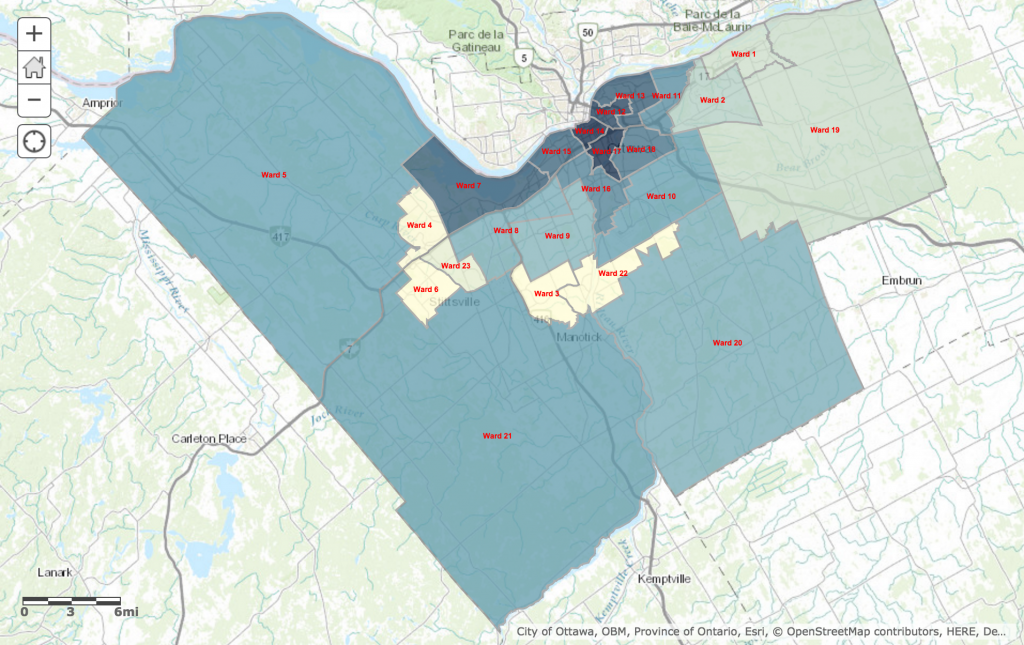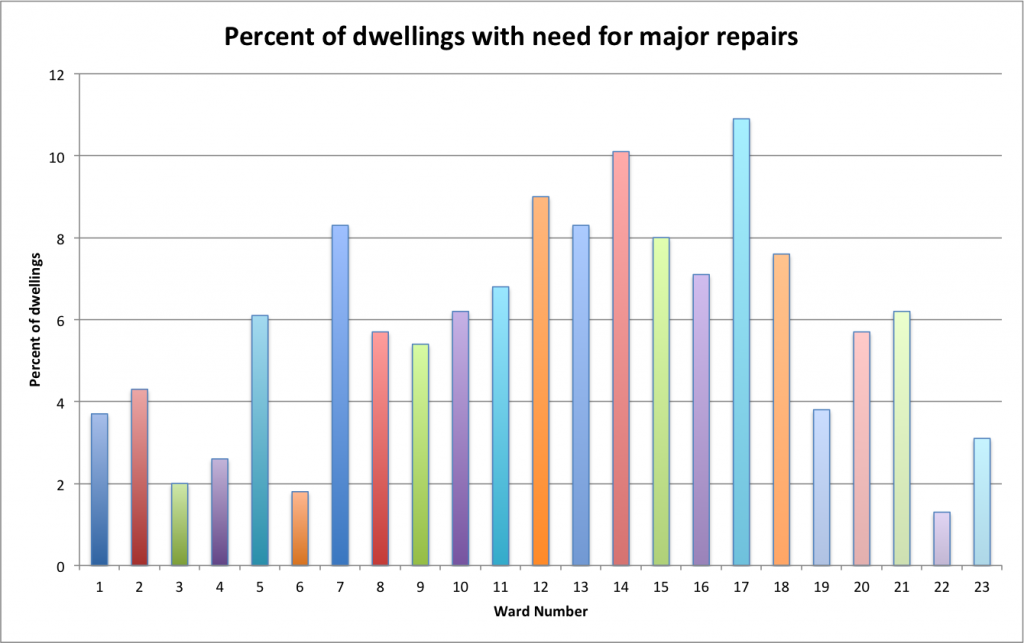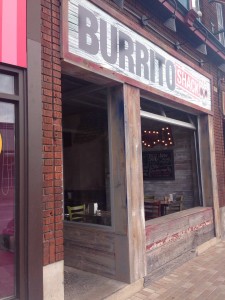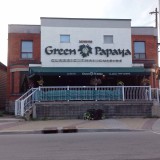
“You walk around the neighbourhood and the building definitely sticks out, but realistically that was my only option,” said Clare Bonnyman, a fourth year Carleton University student living in the Glebe.
Bonnyman’s apartment has needed many major repairs since she moved into her basement bachelor apartment in April.
First there was a leak in her ceiling this summer.
“I went away for a couple days, came back and my whole kitchen table was soaked,” said Bonnyman. “They don’t know where it came from.”
Next, she has had to deal with the ongoing issue of faucets that do not turn on. The pipes often become filled with dirt rendering her only two sinks useless.
“I was at home yesterday and my bathroom sink, even when you would turn the faucet all the way on, would just do little drops,” said Bonnyman.
It’s not uncommon that student housing should need major repairs, especially in the Capital Ward where the homes are often older. At least one in 10 homes in the ward need major repairs according, to the latest census data.
The only other ward in Ottawa that comes close to having that percentage of homes in need of major repairs is Somerset Ward — the other ward in Ottawa with a high concentration of student homes. This is due to the two wards’ proximity to Carleton University and the University of Ottawa.

“Those landlords who target student tenants tend to be the least likely to maintain their homes in a rigorous way,” said David Chernushenko, city councillor for Capital Ward. “The assumption being, they’ll make do, they’re glad to have whatever they can find.”
Homes that need major repairs, according to the latest census, are dwellings that have issues that would compromise the structure or major systems such as heating, plumbing and electrical.
“Why is it that you can walk down the street and go ‘oh there’s a student house’?” said Chernushenko. “Often it’s just the state or physical condition of the building.”
“Typically there’s more people in a student house than a family house and they have a busier social life and the house takes more of a beating,” said Pawel Pytlak, the property manager of Stone Manor PM, a company that owns several student homes.
Sometimes landlords put off repairs and put as many people in a home as possible to get the most money, said Pytlak.
“But it’s a two-way street. There are a lot of student groups out there that take liberties with the house and they really trash the house, so it’s a cat-and-mouse game.”
Chernushenko said that while there may be shifting blame on the issue, the amount of homes in need of major repairs is concerning.
“You want the houses to be kept up because of the look of the neighbourhood, and the value of other people’s real estate depends on the neighbourhood,” said Chernushenko.
It isn’t an issue that can be fixed solely by city council though, he said.
“We need to say what can be done as a city in collaboration with provincial and federal government to look at tax break incentives for home maintenance,” said Chernushenko.
The look of the homes that need major repairs, particularly the ones that attract a lot of students, changes the look of the neighbourhood, said Bonnyman.
“If you look at the Glebe, there’s tons of embassies around and some really nice houses, but there’s also these random pop-ups of student houses and you can smell them from a mile away,” said Bonnyman. “As students we have a right to a working house as well.”






